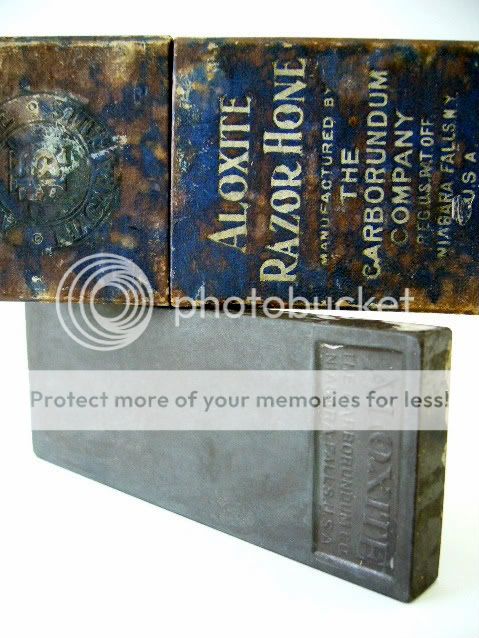To go from one extreme to the other. The best one I've encountered so far with my testing (about half way through);
The Carborundum Co. Aloxite.
Shave ease: 7/10
After-shave feel: 8/10
Hours of shave: 18
Though at a glance, I'd take it for a Swaty copy, I'd assume by the name it's alox based, rather than a mix (which Swaty's are). What impressed me was the feel in the shave, didn't feel like a barbers touch up hone edge. It felt like an edge off a modern synthetic. Very even and consistent edge. The razor didn't feel like it had the flaws barbers hones usually leave razors feeling of. Unusually good for a barber synth. And the feedback was right up there with some of the best barber's synth's I've used. You can almost visualize the edge under abrasion from the feel, which is a nice part of these extremely aggressive hones. Of course the shave duration exposes that the grit still isn't quite up to par with what is available today... for its day and for its speed it has really impressed me. Thus far, I'd consider this the "coticule" of barbers synthetics. The dark spots on the scope image are oil residue from the strop.
I have one of those somewhere...













